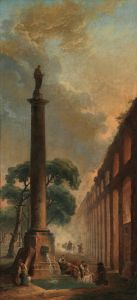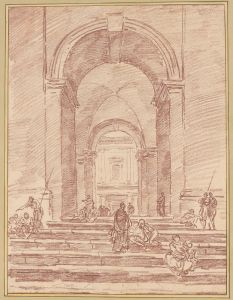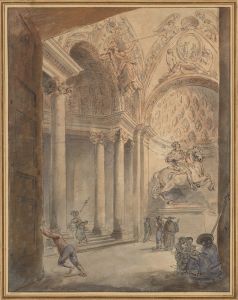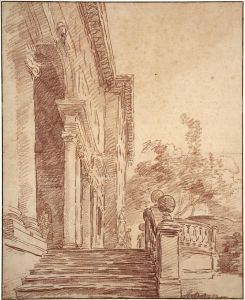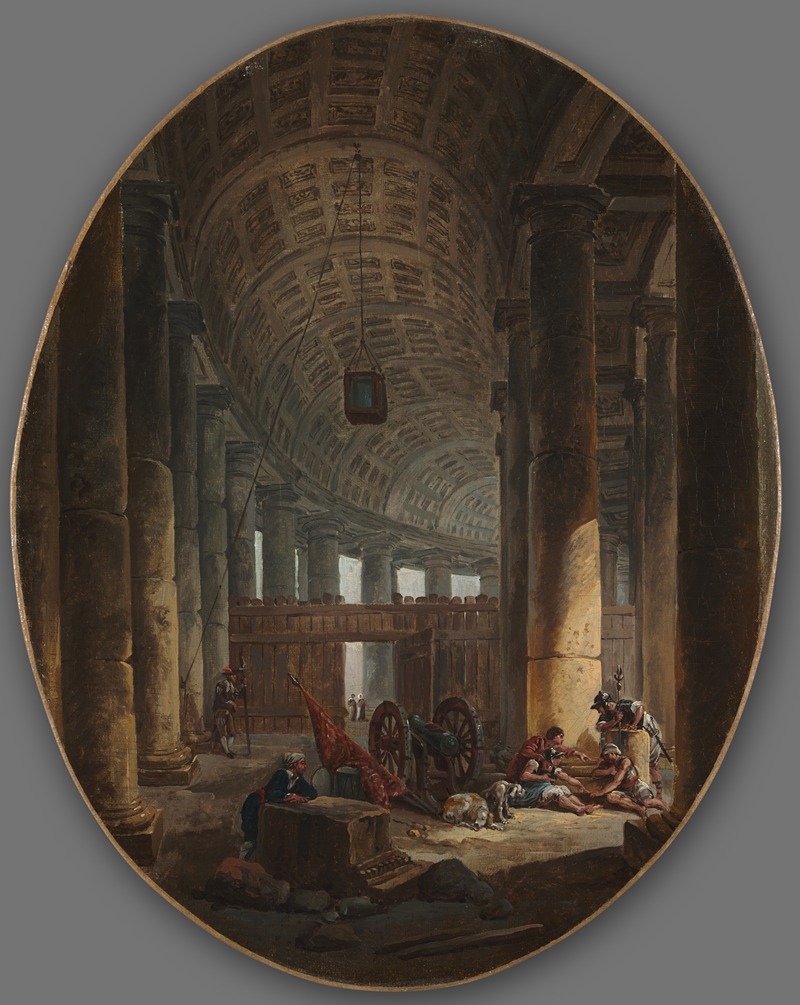
The Colonnade of St. Peter’s, Rome, during the Conclave
A hand-painted replica of Hubert Robert’s masterpiece The Colonnade of St. Peter’s, Rome, during the Conclave, meticulously crafted by professional artists to capture the true essence of the original. Each piece is created with museum-quality canvas and rare mineral pigments, carefully painted by experienced artists with delicate brushstrokes and rich, layered colors to perfectly recreate the texture of the original artwork. Unlike machine-printed reproductions, this hand-painted version brings the painting to life, infused with the artist’s emotions and skill in every stroke. Whether for personal collection or home decoration, it instantly elevates the artistic atmosphere of any space.
"The Colonnade of St. Peter’s, Rome, during the Conclave" is a painting by the French artist Hubert Robert, known for his landscape and architectural paintings. Hubert Robert, born in 1733 and died in 1808, was a prominent figure in the art world during the 18th century, particularly recognized for his ability to capture the grandeur and decay of ancient and contemporary architecture.
This particular painting depicts the colonnade of St. Peter's Basilica in Rome, a significant architectural and religious site. The colonnade, designed by Gian Lorenzo Bernini, is an iconic example of Baroque architecture, characterized by its grand scale and dramatic use of space. It serves as the entrance to St. Peter's Square, leading to the basilica itself, which is one of the holiest sites in Christianity and a major pilgrimage destination.
The setting of the painting during a conclave adds a layer of historical and cultural significance. A conclave is the gathering of the College of Cardinals to elect a new pope, an event that has profound implications for the Catholic Church and its followers worldwide. The conclave is traditionally held in the Sistine Chapel, located within the Vatican, and the atmosphere surrounding such an event is one of solemnity, anticipation, and global attention.
Hubert Robert's depiction of the colonnade during a conclave would have captured the unique atmosphere of this event, with the bustling activity of clergy, pilgrims, and onlookers converging on the site. His work often included elements of both the real and the imagined, blending accurate architectural details with creative interpretations to evoke a sense of timelessness and grandeur.
Robert's paintings are noted for their dramatic use of light and shadow, which would have been employed to emphasize the architectural features of the colonnade and the dynamic scene of the conclave. His ability to convey the scale and majesty of such structures, while also capturing the human element within these spaces, is a hallmark of his artistic style.
The painting reflects Robert's fascination with ruins and the passage of time, themes that recur throughout his oeuvre. Although the colonnade is not a ruin, his treatment of the subject likely imbues it with a sense of historical continuity, connecting the present event of the conclave with the enduring legacy of the site.
Hubert Robert's work, including "The Colonnade of St. Peter’s, Rome, during the Conclave," is celebrated for its ability to transport viewers to another time and place, offering a glimpse into the historical and cultural contexts of the scenes he depicted. His paintings remain valuable both as works of art and as historical documents, providing insight into the architectural and social landscapes of his time.






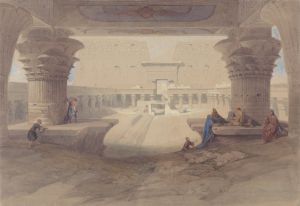
![Portico of the Temple of Edfou [Idfû], Upper Egypt. Nov. 23rd, 1838.](/imgs/217527/s/david-roberts-portico-of-the-temple-of-edfou-idfu-upper-egypt-nov-23rd-1838-79b6cf5b.jpg)
![Portico of the Temple of Kalabshi [Kalâbishah].](/imgs/217528/s/david-roberts-portico-of-the-temple-of-kalabshi-kalabishah-3a295995.jpg)

